What was Section 28? The history of the homophobic legislation 30 years on
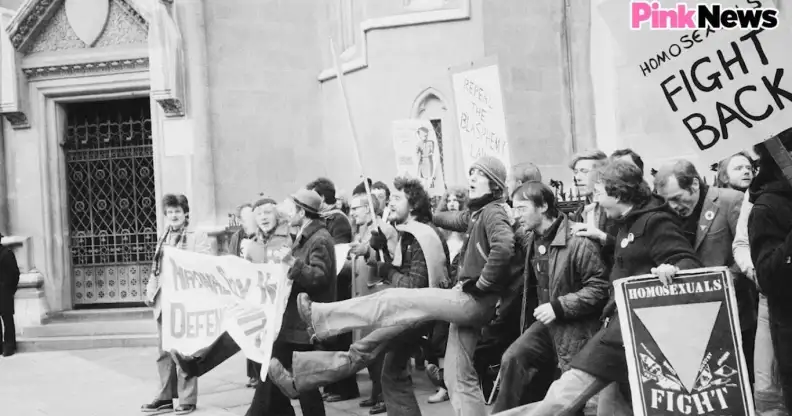
It’s 30 years to the day since the Thatcher government introduced the intensely contentious Section 28.
Three decades on, the history of the homophobic legislation and its “very long shadow” still looms over schools and local authorities in the UK today.
From its very beginnings, Section 28 proved highly controversial. The clause, an amendment to the Local Government Act 1988, banned local authorities and schools from “promoting” homosexuality.
In effect, this meant that councils were prohibited from funding of books, plays, leaflets, films, or other materials showing same-sex relationships, while teachers weren’t allowed to teach about gay relationships in schools.
This clause – the first anti-gay legislation to be introduced in the UK for 100 years – was the Conservative government’s vitriolic and traditionalist response to calls for equality from lesbian and gay rights activists in the late 1980s.
Thatcher captured these venomous anti-gay views in her infamous speech 1987 Conservative Party conference, which was met with rapturous applause.
“Children who need to be taught to respect traditional moral values are being taught that they have an inalienable right to be gay, ” she said. “All of those children are being cheated of a sound start in life. Yes, cheated.”
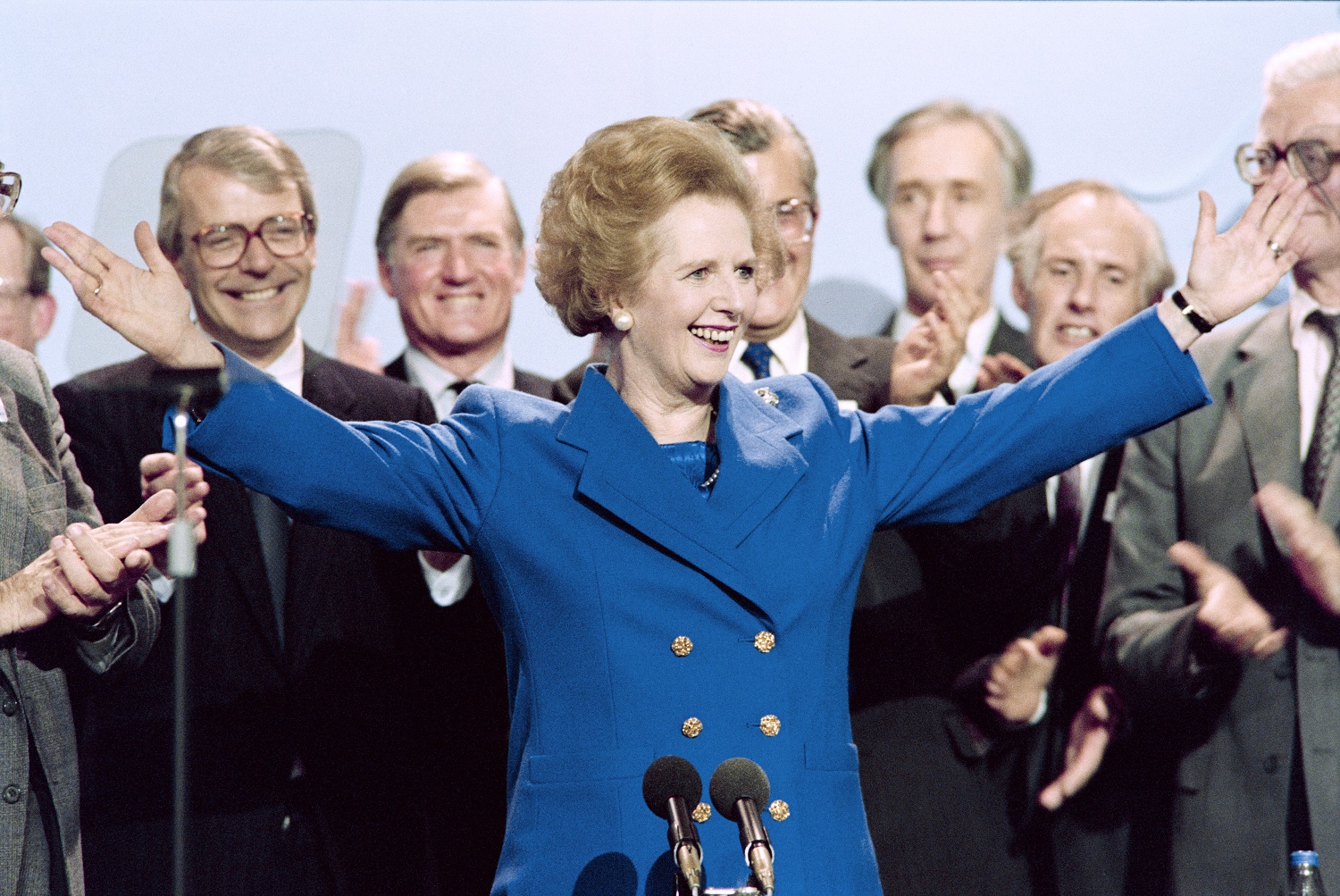
Thatcher at the Conservative Party conference
And, from its incarnation, queer campaigners loathed Section 28.
On the day the clause was passed in the House of Lords, a group of lesbians abseiled into the House of Lords in protest, making national news broadcasts.
The legislation – so loathed, so reviled by supporters of LGBTQ+ equality – caused 20,000 Mancunians to take to their city’s streets to march against it.
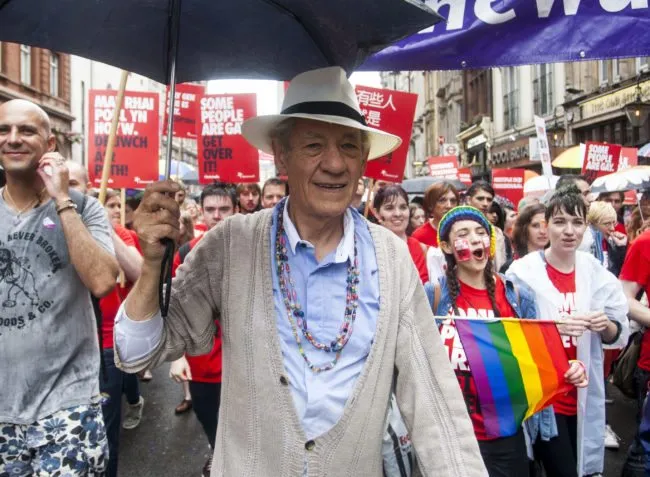
Ian McKellen at Pride in London (John Phillips/Getty)
Actor Ian McKellan opposed the clause so much that he came out as gay in order to fight it.
And, although the clause was finally repealed in Scotland on June 21, 2000, then for the rest of the UK on November 18, 2003, the implications of Section 28 are visible even today.
The background to section 28 and the Earl of Halsbury’s Bill
The origins of Section 28 are rooted in the late 1980s amid a complex environment of both an increased drive to end discrimination against LGBTQ+ people in some parts of society and, conversely, the rising anti-gay rhetoric among other areas.
Spurred on by the partial decriminalisation of male homosexuality in 1967, gay rights activists continued to fight for LGBTQ+ equality.
This, in turn, led to the Greater London Council funding some LGBTQ+ groups, and some local authorities in the capital – like Ealing, Islington, and Camden – as well as in Manchester, actually employing officers to counter homophobia.
There were also alliances between LGBTQ+ groups and Labour unions, notably between the National Union of Mineworkers (NUM) and Lesbians and Gays Support the Miners, which the film Pride is based on.
And, in 1985, Manchester City Council made Margaret Roff the city’s mayor – making her the first openly lesbian woman to hold such a post in the UK.
But, on the one hand, the outbreak of AIDS/HIV led to the mainstream media demonising gay and bisexual men.

A News of the World headline on AIDS
The Conservative Party, meanwhile, issued homophobic posters in the run-up to the 1987 general election claiming that the Labour Party wanted LGBTQ-friendly books – like Young, Gay and Proud and The Milkman’s on His Way – to be read in schools.
By 1987, according to the British Social Attitudes Survey, three-quarters of the population believed homosexual activity was “always or mostly wrong.” Just 11 percent thought it was “never wrong.”
Just before the general election of 1987, the Earl of Halsbury introduced the Local Government Act 1986 (Amendment) Bill, also known as An act to refrain local authorities from promoting homosexuality.
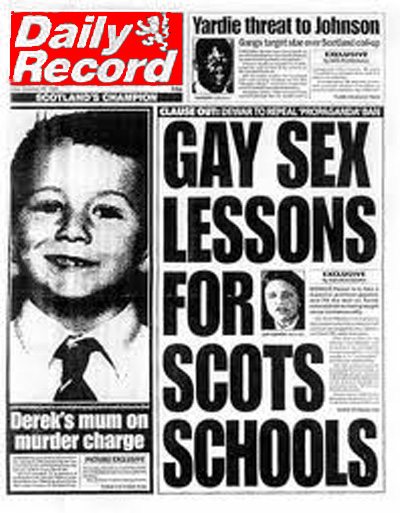
The Daily Record on Section 28
This bill was successfully passed through the House of Lords, and even passed the first stage on the way to becoming law in the Commons, but it went no further.
Sue Sanders, the chair of Schools OUT UK and founder of LGBT+ History Month, taught under, and protested against, Section 28.
She explained that the Earl of Halsbury’s bill was not dissimilar to what became Section 28.
The bill essentially put in place the foundations for Section 28 being introduced after the Conservatives remained in power following the general election.
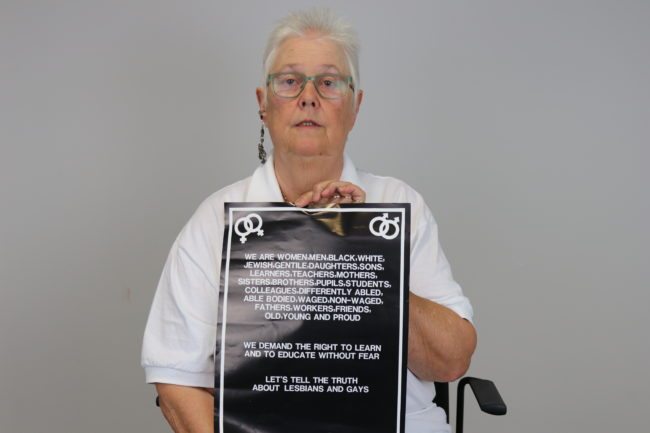
LGBT rights activist Sue Sanders speaks to PinkNews
“It was horrendous, and it’s very difficult I think to get a sense of just how dark and awful it was,” Sanders explained.
“I think one of the difficulties for people who haven’t lived through Section 28, is that you haven’t got a concept of what it was like to have no mobile phones, no internet, no 24-hour news.
“All you got news-wise was through the papers and through television, which was absolutely viciously against us.”
The passing of Section 28
Soon after the Tories were re-elected, Tory MP David Wilshire put forward an amendment to the new Local Government Bill – known first as Clause 27, and later as the notorious Clause 28 – based on the Earl of Halsbury’s Bill, which was subsequently passed through Parliament.
The night before Section 28 became law, a group of lesbians famously stormed the BBC’s Six O’Clock News in protest.
Sanders, who founded the UK’s first LGBT History Month in 2004, describes the event as “beautiful,” adding: “I mean, just done with such panache, done with such vigour, done with such humour.”

A bus is spray-painted pink in protest against Section 28 (Sered/Flickr)
The effects of Section 28 soon became apparent, with some schools and councils shutting down LGBTQ+ youth support groups – and many teachers too afraid to teach about same-sex relationships.
Sanders, who taught under the legislation, told PinkNews: “We talk about fake news now, what we were seeing then was downright lies.
“If you were found to be lesbian or gay and a teacher, the chances were you’d be sacked.”
Sanders said that, although there was never actually a court case over Section 28 in England and Wales, this meant that “self-censorship” among schools and local authorities was “powerful.”
“Teachers who may have wanted to do something, didn’t feel confident enough to do it,” explains Sanders. “Teachers who didn’t want anything to do with it used it as an excuse.
“For those of us who were out and proud, and were trying to work with the issues, I found it quite difficult.”

Protests against Section 28
Section 28 in today’s society
Even though Section 28 was repealed nearly 15 years ago – with the then Conservative Party leader David Cameron apologising for the clause in 2009 – the detrimental consequences of this legislation continues to be felt, particularly among schools, where LGBTQ+ relationships often remain a taboo subject.
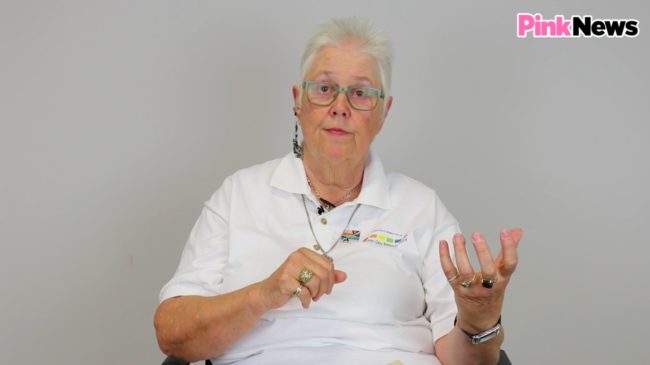
Sue Sanders
“The shadow of Section 28 is very long,” explains Sanders. “It is extraordinary to think that it has been dead for 15 years.
“You can go into schools now and there will be teachers who are still afraid to talk about lesbian and gay issues. Their assumption that it’s not appropriate, that it’s not acceptable, that it’s not legal, is still there.”

